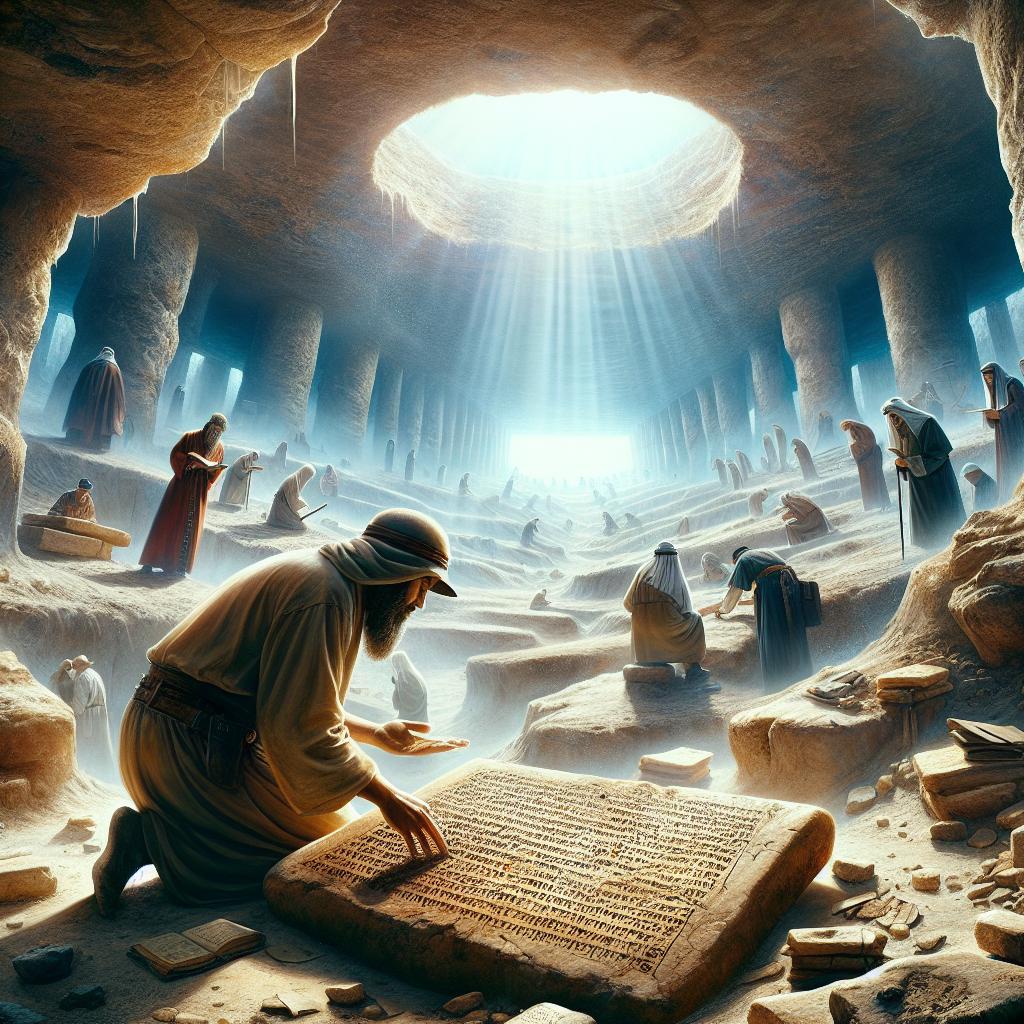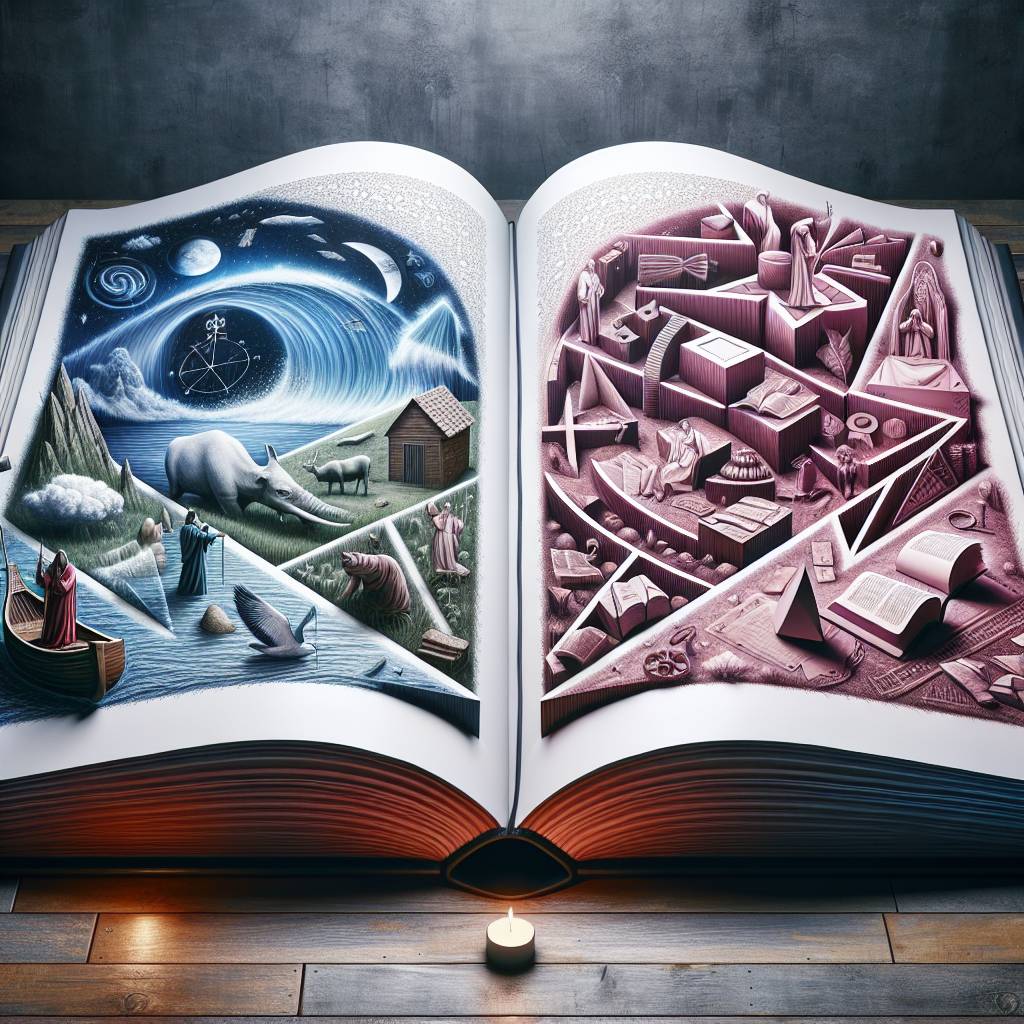The question of whether the Bible is true or fiction has been debated for centuries. This article explores the various perspectives on the Bible’s authenticity, examining historical evidence, archaeological findings, and scholarly interpretations. We’ll delve into the complexities of biblical interpretation, considering both literal and allegorical approaches. By analyzing the historical context, scientific discoveries, and theological implications, we aim to provide a balanced view of this enduring controversy. Join us as we navigate the intricate landscape of biblical studies and seek to understand the truth behind this influential text.
The Bible, a collection of religious texts revered by millions worldwide, has long been a subject of intense scrutiny and debate. Scholars, historians, and theologians have grappled with questions about its historical accuracy, scientific validity, and spiritual significance. This article aims to present a comprehensive overview of the arguments for and against the Bible’s truthfulness. We’ll examine archaeological evidence that supports biblical narratives, as well as scientific discoveries that challenge certain biblical claims. Additionally, we’ll explore the role of faith in interpreting scripture and how different religious traditions approach the Bible’s teachings. By considering multiple perspectives, we hope to provide readers with a nuanced understanding of this complex and contentious topic.
Historical Evidence Supporting Biblical Accounts

The Bible, a cornerstone of faith for millions worldwide, has long been the subject of intense scrutiny and debate regarding its historical accuracy. While some skeptics argue that the Bible is merely a collection of myths and legends, a wealth of historical evidence has emerged over the years that lends credibility to many of the events and figures described in its pages. From ancient inscriptions to archaeological discoveries, these findings have shed light on the historical context of biblical narratives and provided corroboration for numerous accounts found within the sacred text.
One of the most significant pieces of historical evidence supporting biblical accounts is the discovery of the Tel Dan Stele, an ancient Aramaic inscription dating back to the 9th century BCE. This remarkable artifact, unearthed in northern Israel in 1993, contains a reference to the ‘House of David,’ providing tangible evidence for the existence of the Davidic dynasty mentioned in the Bible. This discovery not only confirms the historical reality of King David but also lends credence to the biblical narrative surrounding the establishment of the Israelite monarchy.
Another compelling piece of evidence is the Cyrus Cylinder, a clay cylinder discovered in ancient Babylon that corroborates the biblical account of Persian King Cyrus allowing the exiled Jews to return to Jerusalem and rebuild their temple. This artifact, dating to the 6th century BCE, aligns remarkably well with the events described in the Book of Ezra, demonstrating the historical accuracy of the Bible‘s portrayal of this pivotal moment in Jewish history.
‘Thus says Cyrus king of Persia: The Lord, the God of heaven, has given me all the kingdoms of the earth, and he has charged me to build him a house at Jerusalem, which is in Judah.’ – Ezra 1:2 (ESV)
The Merneptah Stele, an ancient Egyptian inscription from the late 13th century BCE, provides yet another intriguing piece of historical evidence supporting biblical accounts. This artifact contains the earliest known reference to Israel outside of the Bible, confirming the existence of the Israelites as a distinct people group during the time of the Egyptian New Kingdom. This discovery not only corroborates the biblical narrative of the Israelites’ presence in Canaan but also provides valuable insights into the geopolitical landscape of the ancient Near East.
| Artifact | Date | Biblical Connection |
|---|---|---|
| Tel Dan Stele | 9th century BCE | Confirms existence of Davidic dynasty |
| Cyrus Cylinder | 6th century BCE | Corroborates Persian King Cyrus’ decree |
| Merneptah Stele | Late 13th century BCE | Earliest non-biblical reference to Israel |
In addition to these specific artifacts, numerous other archaeological discoveries have provided support for various aspects of biblical history. Excavations at sites such as Jericho, Hazor, and Megiddo have uncovered evidence of destruction layers that align with the biblical accounts of Israelite conquests. Furthermore, the discovery of ancient Canaanite texts has shed light on the cultural and religious practices of the region, providing valuable context for understanding the biblical narratives and the historical setting in which they took place.
While it is important to note that historical evidence does not prove every detail of the Bible to be factually accurate, the accumulation of archaeological and textual discoveries has significantly bolstered the credibility of many biblical accounts. These findings demonstrate that the Bible is not merely a collection of fictional stories but rather a complex tapestry of historical narratives, religious teachings, and cultural insights that reflect the lived experiences of ancient peoples. As research continues and new discoveries are made, our understanding of the historical context of the Bible continues to evolve, providing valuable insights into the rich tapestry of human history and faith.
Scientific Discoveries and Biblical Accuracy

The Bible, a sacred text revered by millions, has long been a subject of scrutiny and debate in scientific circles. However, as our understanding of the natural world has advanced, numerous scientific discoveries have emerged that appear to align with biblical accounts, lending credence to the accuracy of this ancient text. From cosmology to archaeology, various fields of study have unearthed evidence that seems to corroborate certain biblical narratives, challenging the notion that the Bible is merely a collection of myths and legends.
One of the most striking examples of scientific discoveries supporting biblical accuracy is found in the field of cosmology. The Bible‘s account of creation, as described in the book of Genesis, has been a point of contention for centuries. However, modern scientific understanding of the universe’s origins, particularly the Big Bang theory, bears a remarkable resemblance to the biblical narrative. The concept of the universe having a definite beginning, expanding from a singular point, aligns with the Bible‘s declaration that God created the heavens and the earth. This convergence of ancient scripture and contemporary scientific theory has led many scholars to reconsider the relationship between faith and science.
Archaeological findings have also played a crucial role in validating numerous biblical accounts. Excavations across the Middle East have unearthed evidence of ancient civilizations, cities, and events mentioned in the Bible. For instance, the discovery of the Dead Sea Scrolls in the mid-20th century provided tangible proof of the Bible‘s textual accuracy over millennia. These ancient manuscripts, dating back to the time of Jesus, contain remarkably similar content to modern biblical texts, demonstrating the reliability of scripture transmission through the ages.
Examining Archaeological Findings Related to the Bible

Archaeological discoveries have played a crucial role in corroborating many accounts found in the Bible, providing tangible evidence that supports the historical accuracy of this ancient text. Over the years, numerous excavations and studies have unearthed artifacts, structures, and inscriptions that align with biblical narratives, offering valuable insights into the world described in both the Old and New Testaments. These findings not only shed light on the cultural and historical context of biblical events but also lend credibility to the Bible as a reliable historical document.
One of the most significant archaeological discoveries related to the Bible is the Dead Sea Scrolls, found in the Qumran Caves near the Dead Sea in the mid-20th century. These ancient manuscripts, dating back to the 2nd century BCE, contain texts from the Hebrew Bible and other religious writings, providing invaluable information about the transmission and preservation of biblical texts. The remarkable similarity between these scrolls and later biblical manuscripts demonstrates the accuracy and consistency of the Bible‘s textual tradition over millennia.
Another compelling piece of archaeological evidence supporting the Bible is the discovery of the Tel Dan Stele in northern Israel in 1993. This fragmentary inscription, dating to the 9th century BCE, contains the phrase
Addressing Common Criticisms and Controversies

The Bible, as one of the most influential and widely read books in human history, has naturally faced its share of criticisms and controversies over the centuries. Scholars, skeptics, and believers alike have engaged in ongoing debates about the authenticity, accuracy, and interpretation of biblical texts. These discussions often center around several key areas, including historical accuracy, scientific compatibility, and ethical considerations.
One of the primary criticisms leveled against the Bible is its alleged historical inaccuracies. Skeptics argue that certain events described in biblical narratives, such as the Exodus or the conquest of Canaan, lack substantial archaeological evidence. However, proponents of biblical historicity counter that absence of evidence is not evidence of absence, and point to numerous archaeological discoveries that corroborate biblical accounts. For instance, the discovery of the Tel Dan Stele in 1993 provided extra-biblical evidence for the existence of the House of David, supporting the historical reality of this key biblical figure.
Another contentious issue surrounding the Bible is its compatibility with scientific understanding. Critics often cite the creation account in Genesis as conflicting with modern scientific theories about the origin of the universe and life on Earth. However, many theologians and scientists argue that the Bible was never intended to be a scientific textbook, but rather a spiritual guide that uses metaphorical language to convey deeper truths about God and humanity. Some even propose that scientific discoveries, such as the Big Bang theory, actually align with the biblical concept of creation ex nihilo (out of nothing).
Frequently Asked Questions

The main question is whether the Bible is considered true or fictional.Arguments in favor of the Bible being true include historical accounts, archaeological findings, and fulfilled prophecies.Skeptics often cite inconsistencies, historical inaccuracies, and the influence of cultural contexts as challenges to the Bible's truthfulness.Different religious groups interpret the Bible's truth in various ways, ranging from literal interpretations to allegorical or metaphorical understandings.Faith plays a significant role in one's belief in the Bible's truth, often shaping how individuals perceive its teachings and historical context.Some scientists and scholars explore the relationship between biblical claims and scientific evidence, leading to varying interpretations and debates.Readers can explore theological books, historical analyses, and scholarly articles to gain a deeper understanding of the ongoing discourse about the Bible's truth.


